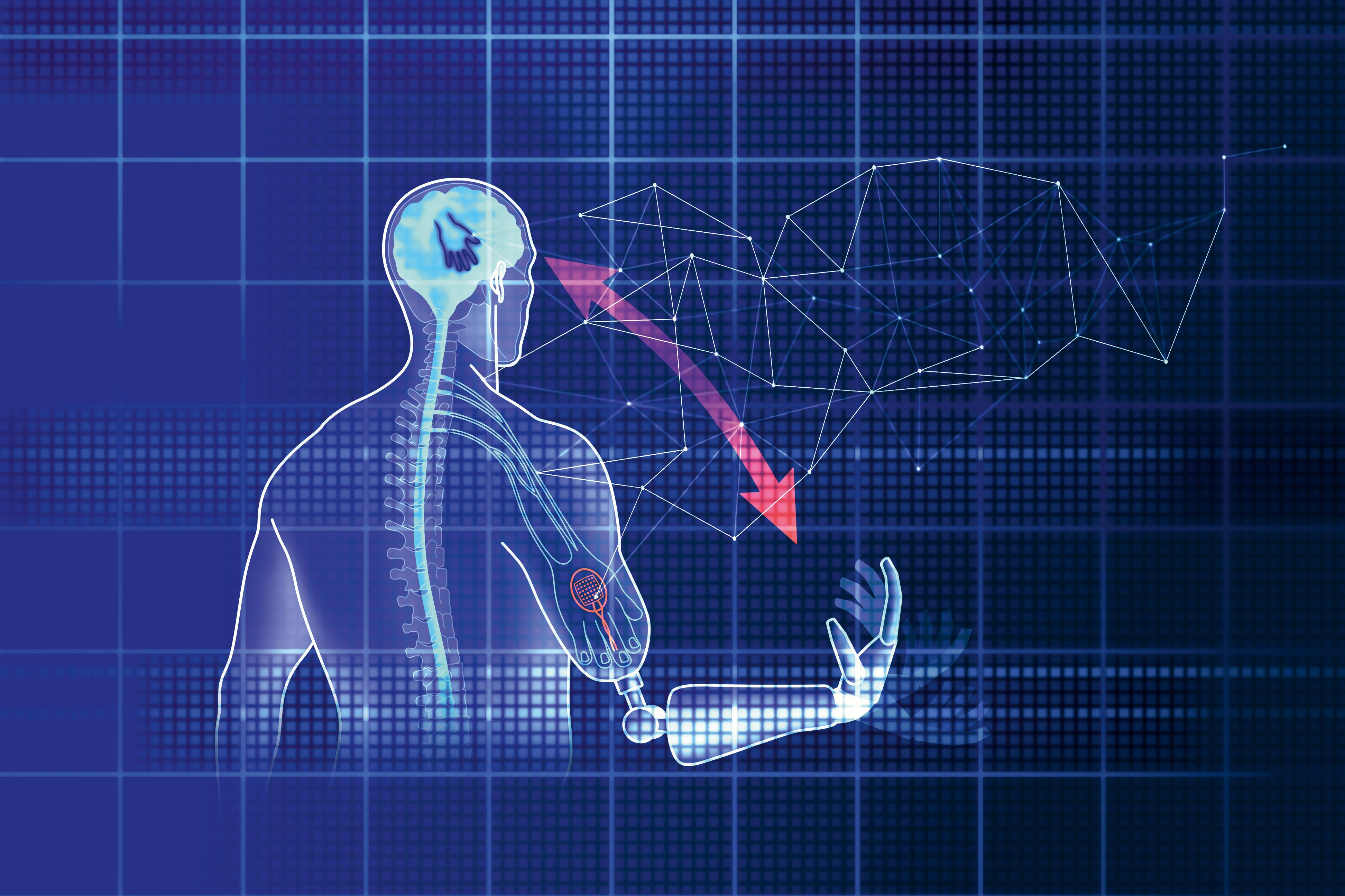
(Vienna, 05 June 2019) With Oskar Aszmann's team from the Division of Plastic and Reconstructive Surgery, MedUni Vienna has been the world's leading innovator in bionic reconstruction since 2009. The first high-profile case was that of electrician Patrick Mayrhofer, who was given a "bionic hand" in the spring of 2011 after touching a live circuit at work and losing the use of his hand. The range of treatments for restoring lost body functions has been expanded by a number of revolutionary approaches. And this is also the purpose of the Clinical Laboratory for Bionic Limb Reconstruction that was opened today at MedUni Vienna/Vienna General Hospital: to explore new bionic dimensions at the interface between man and machine.
A specific example of this is a project (Natural BionicS), for which Aszmann and MedUni Vienna, together with IIT Genoa and Imperial College London, recently received a €10 million ERC Synergy grant. The project is about developing latest-generation bionic prostheses. The aim is to treat patients who have lost extremities using this new concept, thereby giving them the benefit of the most natural possible physicality and functionality using modern prosthetics.
"A central element of this is to create a so-called manunculus," says Aszmann, alluding to the well-known "homunculus" concept of central sensorimotor movement control. This will create a biological interface between lost body parts and the corresponding mechatronic replacements.
A complex neuromuscular procedure is carried out to create a matrix to make biosignals accessible to ultra-modern technology, so that they can be used to control bionic prostheses. Says Aszmann: "In combination with recent advances in signal transmission and mechatronic development, this opens up a new dimension in bionic limb replacement and allows almost unlimitedly intuitive movement control and perception."
Laboratory based on four pillars
The laboratory that was opened on Tuesday is based on four important pillars: (basic) research, treatment of patients, education and public-private partnership. A new contract has been signed with the healthcare products company Ottobock, with which Aszmann has worked closely for many years and whose prostheses represent an important building block in bionic reconstruction. The contract will run until 2025 and will secure €1 million of research funding for the laboratory. Together with Otto Bock Healthcare Products, Aszmann won the prestigious Houska research funding prize in 2015 for his ground-breaking development in the application of bionic upper arm prostheses.
MedUni Vienna in pioneering role
The opening celebration on Tuesday was attended by Aszmann's most famous patient, Patrick Mayrhofer. The 31-year-old is now a successful Paralympic snowboarder, having won Silver in the banked slalom in the 2018 Winter Paralympics. In 2008, the electrician from Mühlviertel in Upper Austria accidentally touched the live circuit when working on a cable. The consequence: very serious injuries to his hands and legs, emergency operations, months of rehabilitation. His legs and right hand were saved but he lost the use of his left hand. Patrick then decided to have his hand amputated and replaced a few weeks later by a bionic prosthesis. Over the last few years, many prominent universities (Johns Hopkins, MIT, Harvard, HSS New York, Ann Arbor, U Michigan) have followed suit with similar concepts and research programmes.
Science book on "Bionic Reconstruction"
In the science book "Bionic reconstruction – Reconstruction at the man/machine interface", which he wrote together with Laura Hruby in 2018, Oskar Aszmann outlines some of the most exciting cases and provides a detailed scientific description, which is also suitable for interested non-medical people. The book was published by MedUni Vienna in collaboration with MANZ Verlag: Recommended reading: "Bionic reconstruction. Reconstruction at the man/machine interface." Oskar Aszmann, Laura A. Hruby, MedUni Vienna at MANZ Verlag, ISBN: 978-3-214-01486-5. 2018, 180 pages, €23.90.